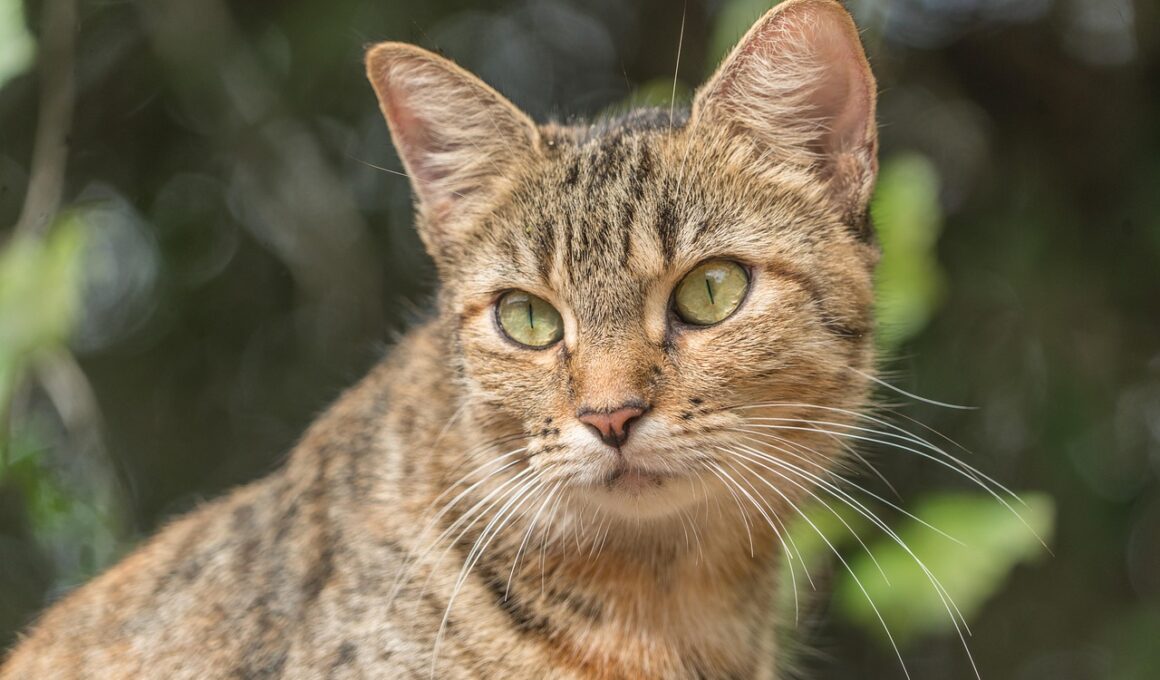Understanding Feral vs. Stray Cats in Socialization Efforts
Socializing stray cats begins with understanding the differences between feral and stray cats. Stray cats have often lived closely with humans and can be friendly and curious. However, feral cats, usually born outdoors, do not have the same relationship with people. They are more suspicious and fearful, making socialization efforts challenging. Knowing these differences guides the appropriate methods to help them adapt to human interaction. Socializing a stray cat often involves approaching them slowly and allowing them to make the first moves. Understanding their body language is crucial, too. Signs of comfort include purring, head-butting, and relaxing body posture. However, fear can manifest as hissing or aggressive postures. Therefore, establishing trust involves patience, positive reinforcement, and a calm environment. This understanding forms the foundation of successful socialization efforts.
Many people underestimate the impact of socializing stray cats. Unlike feral cats, which usually rely on survival instincts, stray cats can become loving companions with the right approach. Providing food and shelter is often the first step to attracting them. Creating a safe space allows the cat to explore at their own pace. This may involve a quiet area with food, water, and a comfortable resting spot. Once they feel secure, you can begin to engage in socialization. Speaking softly and offering treats can foster trust and comfort. Gradually, you can try petting or gentle interaction. Each small step builds their confidence. It’s essential to recognize that every cat is an individual and may take varying times to adapt. Some may warm up quickly, while others need extended periods before they are comfortable. Patience and consistency are key components during this process. Moreover, understanding their behavior facilitates effective socialization.
The Role of Environment in Socialization
The environment plays a significant role in the socialization of stray cats. An uncontrolled setting can leave cats feeling vulnerable and frightened. Safe, quiet spaces help to ease anxiety and promote positive interactions. Ensure that cats have access to sheltered areas where they can retreat when they feel threatened. The presence of unfamiliar noises or rush can deter them from approaching humans. Therefore, maintaining a calm atmosphere is crucial. Additionally, offering food can be an effective strategy to draw them closer. A regular feeding schedule can help establish trust, as the cats associate human presence with positive experiences. Some humans use a quiet, inviting outdoor space to help the cats feel comfortable. Since cats are territorial, it’s essential to avoid crowded locations where they can feel overwhelmed. Creating a peaceful environment enhances the chances of successful interaction and socialization efforts. This becomes especially important in urban settings where outdoor cats face challenges. Thoughtful planning can significantly impact their socialization experience.
Another critical aspect involves understanding the impact of stress on a stray cat during the socialization process. High-stress situations can lead to setbacks in trust-building efforts. Signs of stress in cats might include hiding, avoidance behaviors, or aggression. This is why it is essential to monitor their feelings closely. If a cat appears hesitant or frightened, allow them time to adapt without forcing interactions. Gaining trust may take weeks or even months, depending on the cat’s past experiences. Creating a predictable routine can help reduce their anxiety. Gradually introducing them to different environments and people can also facilitate smoother socialization. Using familiar scents, such as toys or blankets, can have a soothing effect. Always proceed at a pace that respects the cat’s comfort levels. It is vital to promote a safe space where the cats can feel relaxed. Stress reduction techniques contribute significantly to socialization success over time and create a harmonious bond.
Utilizing Positive Reinforcement Techniques
Positive reinforcement techniques can play an essential role in successfully socializing stray cats. Rewarding them with treats or affection when they display desired behaviors encourages them to repeat those actions. Offering a consistent type of food that the cat enjoys makes it easier to establish positive associations during the initial interactions. Utilize clicker training or verbal praise to reinforce good behavior. For example, if you notice that the cat comes closer or approaches you, offer a treat or gentle words of encouragement at that moment. Gradually, as they feel more comfortable, you can introduce them to additional experiences. Socialization can also involve playing interactive games to stimulate engagement, like using a feather wand or a laser pointer, encouraging the cat to bond through play. Gradually including new elements fosters trust and deepens the relationship. The aim is to create enjoyable experiences to eliminate fear. The consistent use of positive reinforcement ultimately paves the way for more significant interactions, leading to a more social cat. This commitment can turn a fearful stray into a beloved companion over time.
Understanding the significance of spaying and neutering in socializing stray cats is vital. Responsible pet ownership includes addressing the reproduction aspect, which reduces the stray population over time. By spaying or neutering, you significantly reduce the instinctual behaviors that often lead to aggression and territorial disputes. Such aggressive behaviors can make socialization more challenging. Health benefits also accompany these procedures, leading to a reduced risk of certain diseases. Consequently, healthy and well-adjusted cats tend to be more amiable, increasing the likelihood of successful socialization. Many communities offer programs and assistance for spaying and neutering stray cats. Involvement in these initiatives promotes overall welfare and long-term improvement in community cat populations. Additionally, this responsible action fosters healthier relationships between humans and cats. Socializing stray cats leads to more stable, adapted feline populations in urban settings. Therefore, the act of spaying and neutering contributes fundamentally to the broader scope of socialization efforts.
Conclusion: Embracing the Challenge
In conclusion, socializing stray cats is a rewarding but challenging endeavor. Differentiating between feral and stray cats remains critical, as this distinction influences the approach we take. Engaging with them requires patience, empathy, and consistent effort. Creating safe environments, recognizing signs of stress, and utilizing positive reinforcement techniques are essential elements in this multidimensional process. Remember that every cat is unique, and their responses will vary. With determination and compassion, stray cats can transition into loving companions. Commitments to socialization efforts directly impact the welfare of these animals, contributing to the enhancement of their lives within our communities. Additionally, involvement in initiatives for spaying and neutering adds another layer of responsibility. It ensures a healthier existence for both cats and the environments they inhabit. Thus, embracing these challenges leads not only to fulfilling relationships but also to nurturing a better future for our feline friends. Therefore, every effort put into socializing stray cats is well worth the eventual reward of a purring friend.
Contemplating these factors makes socialization a multifaceted journey.


